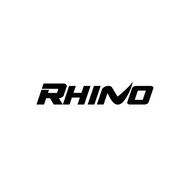Storyteller Spotlight - Light Side Up

Filmmaker and photographer, Nate Luebbe, had always been fascinated by the night sky and in particular, the Aurora Borealis. But he always felt disconnected - what if you could change your perspective and witness the spectacle from a vantage point other than the ground? How close could you get?
But he was limited by the equipment. Lowlight-optimized cameras were heavy and expensive, and given the high chance of failure, this problem was prohibitive.
Enter the recently released, Sony A7siii- a lightweight, relatively inexpensive, lowlight powerhouse. Combine this with a weather balloon, a $25 disposable foam cooler, a short weather window and some luck ... and all of a sudden you have the ability to capture the Aurora Borealis, like it's never been seen before.
how did you dream up this project?
I was talking with a few other photographers about how different the Aurora Borealis look when you see them from an airplane, and I realized there was an untapped potential out there that was largely unexplored. It’s really rare in this age of digital cameras to find a shot that hasn’t been duplicated to death, so I knew I had to jump on it as fast as possible.
Tell us about some of the technical challenges that you faced and how you overcame them?
It’s really hard to pinpoint one specific challenge because nothing about this project was seamless and easy. The camera in the balloon was going to be operating in the absolute depths of night, and without even a hint of city light nearby. In fact, we were more or less above the atmosphere as well, so it was a darkness that none of us have actually experienced in person. We used a fast, wide lens (20mm f/1.8) to get as much light as possible on the sensor, and we chose the Sony a7S III for its legendary low-light performance. We limited the camera at the max of the native-ISO range though, because we wanted the cleanest signal possible. Most of the flight was at 102,400 ISO, so it seems we made a good call there.
How did you deal with condensation on the lens?
Condensation was a huge concern! We had a double-pane front lens filter assembly custom-manufactured by Breakthrough Photography for insulation, and we put a chemical handwarmer directly under the lens to help keep the elements warm enough to prevent frost.
Did you just roll the whole time, or were you shooting photos at an interval?
We just set it to roll the entire time, because we didn't want to risk having the camera not fire for a certain interval or something. We went with 1/25 sec for the framerate. Not the best framerate for 24fps filming, but the name of the game for this project was getting absolutely as much light as possible on that sensor, so following the 180 degree shutter rule would have eliminated half of our available light. You can definitely see motion trails on the stars when the balloon is swinging, but I think that's an acceptable trade-off considering what we were trying to do!
YOU JUST SENT A CAMeRA TO THE EDGE OF SPACE, DO YOU WORRY THAT THAT WILL BE HARD TO TOP?
This might be hard to top in terms of uniqueness, but I’m still at the beginning of my cinematic journey. We’re just getting started, and I’ve already got a few ideas simmering on the back burner!




